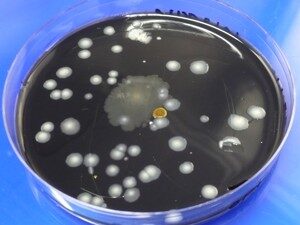Question: I love your blog and hope you can answer this mold question.
I worked at a beauty salon for 1 1/2 years. I started to have back to back urinary tract infections (Escherichia coli). I’ve had these infections a couple of times in my 40+ years on earth but nothing like I was experiencing this time around. It felt like someone lined my bladder with vicks vapor rub and added some pins. The antibiotics I was prescribed made the pain worse. A client of mine (she came every week and spent a long time under the dryer) was experiencing the same thing. About 2 weeks after the bladder pain started, I started having difficulty breathing (I was diagnosed with moderate lung obstruction) and I was placed on an inhaler. I then noticed a fungal rash on my arms I had to treat with Monistat (it cleared up in 6 days). My symptoms started in early June after a flood in the shop which I suspect could have caused mold growth. Dehumidifiers were bought in and ran all day for a couple of days. By August I had to leave because it was just too difficult to breath, take a flight of stairs etc. My urologist couldn’t find the cause of the pain and an internal view of my bladder found nothing. Can mold, yeast, and non-specific bacteria found in these reports cause bladder problems? The pain got significantly better a week after I left. The pain went away completely after about 2 months away from the salon.
The owner decided to have an air quality test for mold done because a girl that rented the room prior to me complained of breathing difficulties only when she was at work. I attached the mold report for you to look at.
Thanks!
Answer: Escherichia coli (E. coli in short) is a bacterium commonly found in the lower digestive tract of warm-blooded animals including humans. Most E. coli strains are harmless, but some strains, such as serotype O157:H7, can cause serious food poisoning. E. coli is also a common cause of urinary tract infections. Infection occurs when E. coli from the digestive tract find their way into the urethra and begin to multiply. The bacterium can move to the bladder and multiply there causing infection of the bladder. I have looked at the lab report that you had attached. The molds reported are unlikely to cause infection. A possible fungal infection of the bladder especially when one has been using antibiotics is Candida infection (candidiasis). Candida can infect other areas of the body including the mouth, throat, skin, scalp, genitals, fingers, nails, bronchi, lungs, and the gastrointestinal tract.
